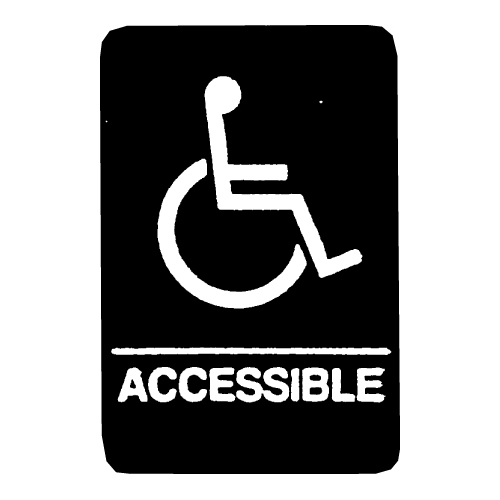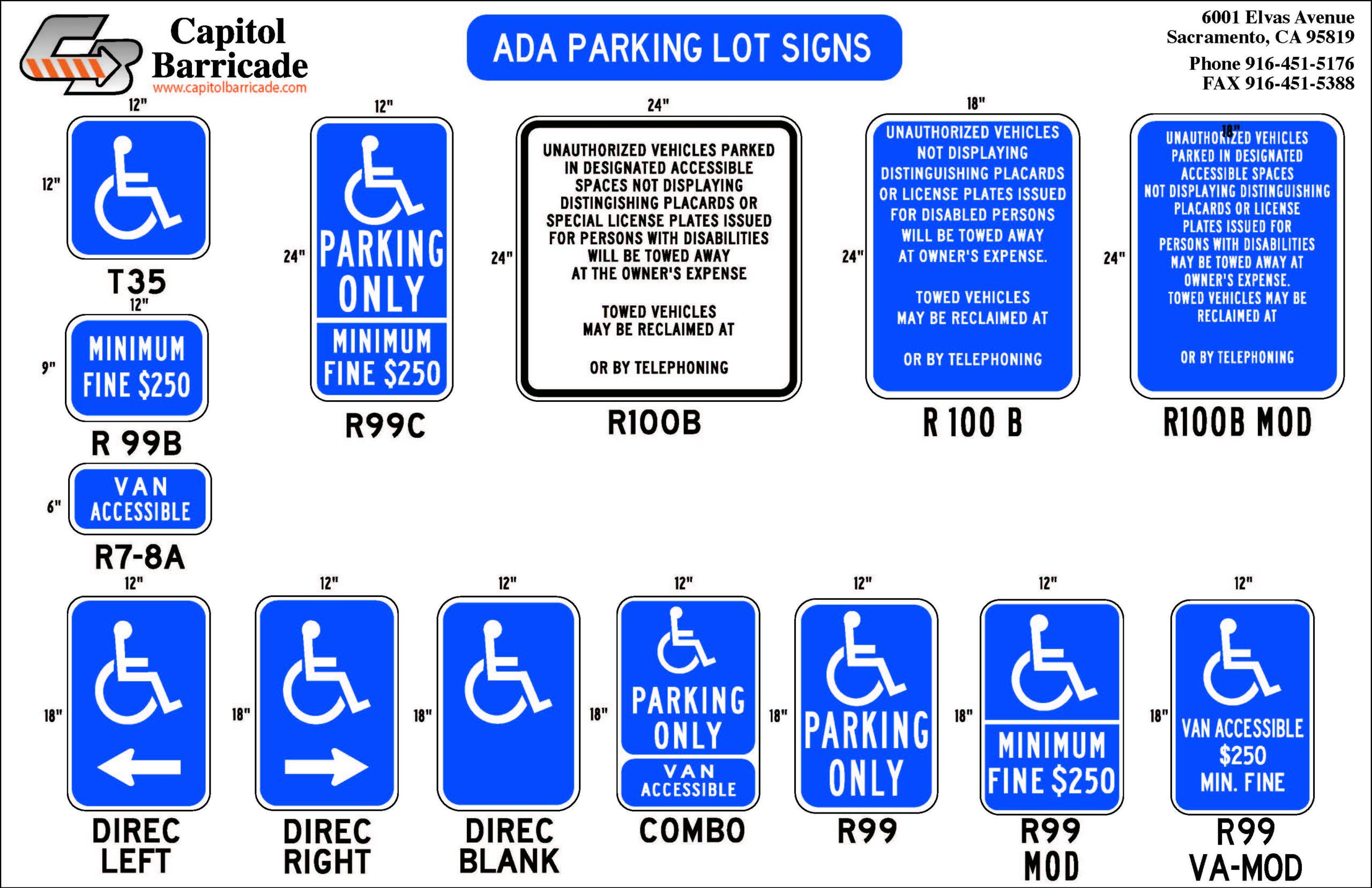Just How ADA Signs Boost Availability for Everyone
Just How ADA Signs Boost Availability for Everyone
Blog Article
Understanding the Relevance of ADA Signage for Inclusive Environments
In an increasingly diverse culture, the relevance of ADA signage can not be overstated. By integrating attributes like high-contrast visuals and responsive personalities, ADA signage plays a crucial duty in making sure equal gain access to for individuals with specials needs.
The Function of ADA Signage
ADA signs plays a crucial function in making certain availability and inclusivity in public and private areas. These signs are vital in directing people with handicaps, supplying them with the essential information to browse environments individually and securely. The Americans with Disabilities Act (ADA) sets forth certain guidelines for signs to make sure that people with visual, acoustic, or cognitive impairments can access the very same details as those without such difficulties.
The function of ADA signs expands beyond plain conformity with legal demands; it personifies a commitment to equal rights and non-discrimination. By implementing ADA-compliant indicators, institutions and companies show their dedication to developing environments where everybody, regardless of their physical capacities, can participate completely and equally. This is particularly important in areas like hospitals, universities, and federal government buildings, where ease of access can straight affect an individual's health and ability to gain access to important solutions.
Moreover, ADA signage adds to the overall customer experience by minimizing complication and enhancing wayfinding for all people. Clear, purposefully placed signs aids in handling foot web traffic, minimizing congestion, and improving safety and security. Basically, ADA signs is a foundation of comprehensive design, promoting a setting where all people can interact and navigate with their surroundings properly.
Secret Parts of ADA Signs
Reliable communication is at the heart of ADA signs, which integrates numerous key elements to ensure accessibility for individuals with specials needs. Among the key components is using tactile characters, such as Braille and elevated letters, which enable individuals with aesthetic disabilities to read the signs via touch. The Braille needs to be Quality 2 and positioned straight below the corresponding text.

An additional critical element is the placing area and height of the indications. ADA policies specify that signs must be set up at an elevation that comes to all individuals, generally in between 48 and 60 inches from the flooring. This makes sure that they are available for people in wheelchairs or of varying elevations.
Advantages for Individuals and Businesses
While ensuring accessibility via ADA signage is a legal demand, it also offers significant advantages for both companies and individuals. For people, especially those with disabilities, ADA signs provides crucial access to public rooms.
For services, the execution of ADA signs can cause enhanced consumer satisfaction and commitment. By demonstrating a commitment to access, companies can bring in a broader customer base, consisting of individuals with handicaps and their family members, that commonly choose comprehensive atmospheres. Furthermore, ADA compliance can protect companies from potential lawful challenges and penalties related to non-compliance, securing their reputation and economic stability.
Furthermore, ADA signage can add to a favorable workplace environment. Workers with impairments benefit from easily accessible navigation within their workspaces, promoting efficiency and morale (ADA Signs). Ultimately, buying ADA signage not only satisfies legal obligations yet also boosts the inclusivity, reputation, and operational success of organizations
Usual Sorts Of ADA Signs
When going over the different forms of ADA signage, it is necessary to recognize the certain kinds that satisfy different ease of access needs. ADA signage is created to ensure that individuals with disabilities can browse spaces safely and separately. A main classification includes tactile indicators, which include raised personalities and Braille. These signs are essential for aesthetically impaired individuals, enabling them to recognize spaces, departures, toilets, and various other essential areas.
One more considerable sort of ADA signage is directional indicators. These supply clear support to numerous locations within a center, making certain that all people, including those with flexibility problems, can easily find their method - ADA Signs. They usually include icons and high-contrast shades to boost presence and understanding
Informational signs are also essential, supplying essential information regarding facilities, such as running hours and plan standards. Furthermore, regulative signs convey compulsory instructions, like "No Smoking cigarettes" or "Departure Route," making certain conformity with safety and security methods.
Lastly, recognition indicators are used to classify spaces and rooms, making it simpler for every person, no matter capacity, to identify certain areas. These indications often consist of pictograms to improve global understanding. Jointly, these usual sorts of ADA signage play a critical function in creating inclusive and obtainable atmospheres.

Executing Reliable Signage Solutions
Carrying out efficient signage solutions requires a critical approach to make certain ease of access and conformity with the ADA standards. The procedure starts with a detailed analysis of the facility to determine the certain signs requires based on the environment's feature, design, and the population it offers. This evaluation needs to consist of considerations for both temporary and permanent signs, each calling for distinctive style and positioning strategies.
The choice of products and style aspects is important. Signage needs to be made from long lasting products to endure ecological elements while guaranteeing high presence and visit site clarity. Trick attributes such as contrasting colors, tactile components, and non-glare coatings are essential to accommodate people with aesthetic disabilities. Additionally, the assimilation of Braille and raised personalities should comply with ADA requirements to offer equal accessibility.
Appropriate installment is the following essential step in executing reliable signs solutions. Indicators should be put at certified heights and areas to guarantee they are easily visible and legible. Regular evaluation and maintenance of signage ensure ongoing conformity and efficiency. Engaging with accessibility specialists throughout the preparation and implementation stages can offer useful insights, making certain that signage not only fulfills legal requirements however additionally improves the inclusivity of the atmosphere.

Final Thought
ADA signage plays a crucial function in creating inclusive atmospheres by making certain compliance with access guidelines and boosting navigating for all customers. Key components such as tactile characters, high-contrast layouts, and proper mounting elevations are vital for effective execution. These components advertise independence, non-discrimination, and equal rights, benefiting both people with disabilities and services. By cultivating more secure and more welcoming spaces, ADA signs highlights a dedication to inclusivity, inevitably adding to an extra fair culture for everyone.
By incorporating functions like high-contrast visuals and tactile personalities, ADA signage plays an essential duty in ensuring equivalent gain access to for individuals with disabilities. The Americans with Disabilities Act (ADA) sets forth certain guidelines for signage to guarantee that people with visual, auditory, or these details cognitive impairments can access the very same details as those without such challenges.
Efficient communication is at the heart of ADA signage, which includes numerous crucial components to guarantee access for people with impairments.While making sure accessibility through ADA signage is a legal need, it additionally provides considerable benefits for both individuals and organizations. ADA signs is designed to make sure that people with handicaps can navigate rooms find more info safely and separately.
Report this page